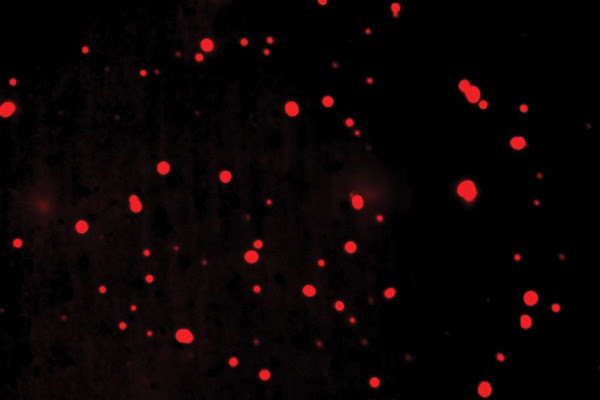
Fluorescently tagged molecules of the cancer drug cisplatin clump up inside droplets in cells. ((Isaac Klein/Whitehead Institute))
‘Lava lamp’ cells could lead to better drugs
A study shows how cancer-drug compounds become concentrated in precise spots in cells like blobs in a lava lamp or oil shaken in water. The phenomenon, called phase separation, already happens with biological material in cells. Proteins, RNA and other cellular components self-organize into liquid-like droplets known as condensates, which help to compartmentalize the cell’s insides. Researchers at the Whitehead Institute in Cambridge, Massachusetts, suggest that synthetic compounds can be selectively sequestered in droplets in a similar way. “Every cancer drug we’ve examined finds itself concentrated in these phase-separated condensates,” says biologist Rick Young. The phenomenon could help to explain why so many therapies that work in the laboratory ultimately fail to treat people — and could be exploited to make certain drugs hit their targets more effectively. The findings are already leading to drug-design strategies in the fight against the new coronavirus.
Nature | 5 minRead more: What lava lamps and vinaigrette can teach us about cell biology (Nature | 11 min read, from 2018)Reference: Science paper






















.png)











No hay comentarios:
Publicar un comentario